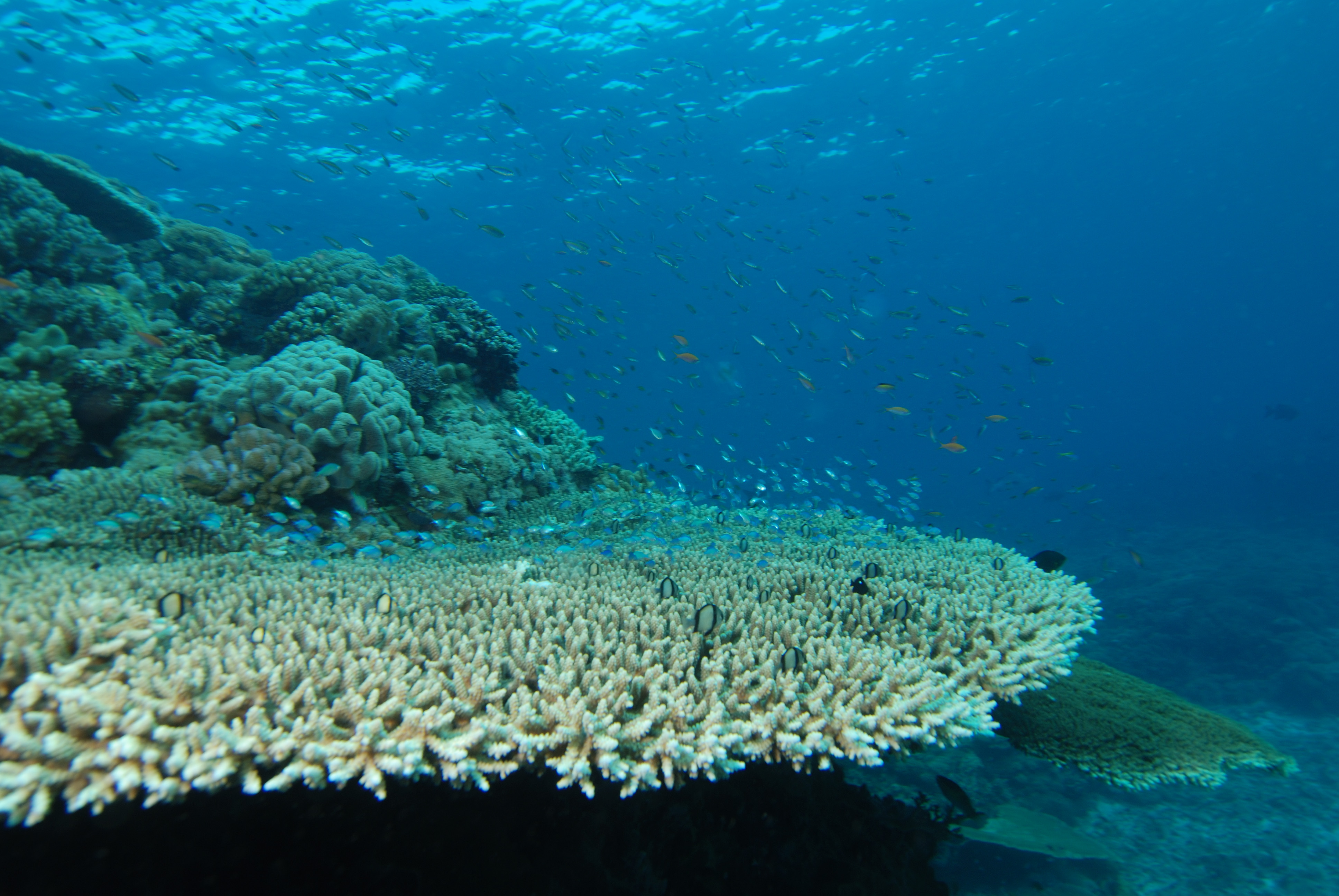- Acropora
Taxobox
name = "Acropora"

image_width = 250px
image_caption = "Acropora pulchra"
regnum =Animal ia
phylum =Cnidaria
classis =Anthozoa
ordo =Scleractinia
familia =Acroporidae
genus = "Acropora"
genus_authority = Oken, 1815
subdivision_ranks = Species
subdivision = "Acropora cervicornis "
"Acropora cytherea"
"Acropora echinata"
"Acropora humilis"
"Acropora palmata "
"Acropora paniculata"
"Acropora tumida"
"Acropora valida"
"Acropora yongei"
and numerous others..."Acropora" is a genus of
coral in the phylumCnidaria .Anatomy and Distribution
Depending on the species and location, "Acropora" may grow as plates or slender or broad branches. Like other corals, "Acropora" corals are actually colonies of individuals, known as polyps, which are about 2 mm across and share tissue and a
nerve net . The polyps can withdraw back into the coral in response to movement or disturbance by possible predators, but when undisturbed they protrude slightly. The polyps usually extend further at night as they capture zooplankton from the water.Acropora genus corals are most common in shallow reef environments with bright light and moderate to high water motion. Many small reef fishes live near acropora colonies and retreat into the thicket of branches if threatened.
Threats
These corals have
zooxanthellae ,symbiotic algae that live in the corals' cells and produce energy for the animals throughphotosynthesis . Environmental destruction has led to a dwindling of populations of "Acropora", along with other coral species. Acropora corals are especially succeptible to bleaching when stressed. Bleaching is due to the loss of the coral's zooxanthellae, which are a golden-brown color. Bleached corals are stark white and may die if new zooxanthellae cannot be assimilated. Common causes of bleaching and coral death include pollution, abnormally warm water temperatures, sedimentation and excess nutrients from runoff.Reefkeeping
Most acropora corals are brown or green but a few are brightly colored and those rare corals are prized by aquarists. Captive propagation of acropora corals is widespread in the reefkeeping community. If given the right conditions, acropora corals grow quickly and individual colonies can exceed 1 meter across in the wild. In a well maintained reef aquarium, finger-sized fragments can easily grow into basketball-sized colonies in 1 to 2 years. Acropora species present themselves as challenging to keep in the home aquarium. They do require bright light, stable temperatures, and turbulent water movement. Providing these elements can financially exceed more than the average hobbyist is willing to part with. It is this factor that seems to keeps aquarists from acquiring this beautiful species.
External links
*
Wikimedia Foundation. 2010.
